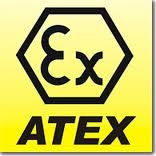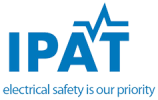
What are the ATEX regulations for explosive atmospheres?
What is ATEX?
The ATEX directive combines two EU regulations:
- ATEX Product Directive 94/9/EC, for product design and construction
- ATEX 99/92/EC, covering hazardous environments.
ATEX was introduced in 1996 on a voluntary basis and become complusory from 1 July 2003.
What does ATEX stand for?
ATEX takes its name from the French title of the 94/9/EC directive Appareils destinés à être utilisés en ATmosphères Explosives.
How is ATEX equipment graded?
Equipment to be used in potentially explosive atmospheres (i.e. where there is gas, vapours or dust present) is graded as follows:
Group I (mines)
- M1 – For use above and below ground where equipment must remain operational should an explosion occur
- M2 – As with M1 but designed to disconnect in the event of an explosive atmosphere.
Group II (surface)
- Category 1 – The highest level of protection, for permanently explosive atmospheres
- Category 2 – For equipment used where an explosive atmosphere is likely to occur.
- Category 3 – Providing protection where explosive atmospheres are unlikely or infrequent.
What are the ATEX zones?
ATEX classifies zones in three categories:
- Zone 0 (gas) / 20 (dust) – Permanently explosive atmosphere requiring Category 1 equipment
- Zone 1 (gas) / 21 (dust) – Occasional explosive atmosphere requiring Category 2 equipment
- Zone 2 (gas) / 22 (dust) – Explosive atmosphere occurs during abnormal conditions and requiring Category 3 equipment.

Leave A Comment
You must be logged in to post a comment.